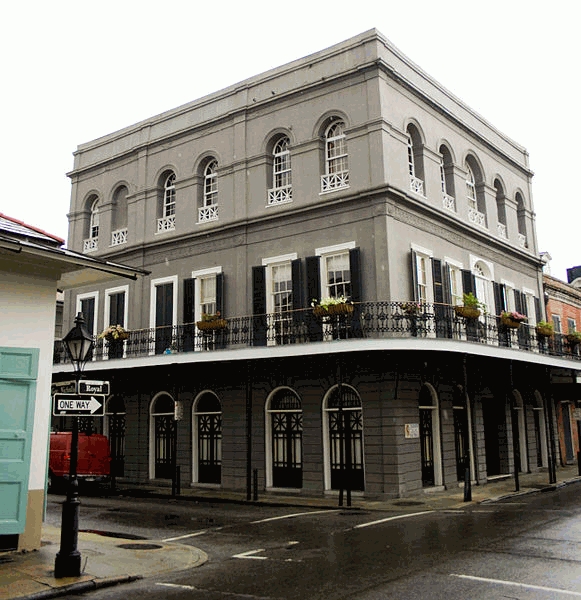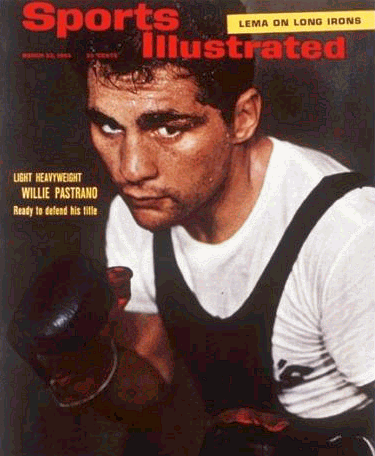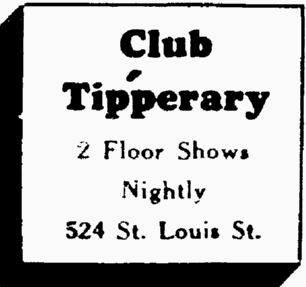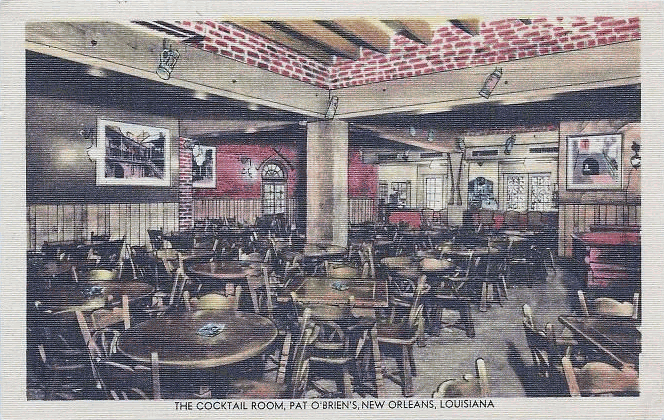|
Today in New Orleans History |
|
|
April 10


 Fire at Madame LaLaurie's Mansion Delphine Macarty Lalaurie was a wealthy white New Orleans woman infamous for cruel treatment of
her slaves. Rumors of her atrocities had been circulating for years, and on the morning of April 10, 1834,
a fire at Madame Lalaurie’s [1140] Royal Street mansion revealed seven bondspeople who had been starved, tortured, and
chained. As the day went on and the sheriff did not arrest the culprit, an increasingly angry crowd gathered around the Lalaurie
home. Finally her carriage burst out of the gate and sped to Lake Pontchartrain, where she boarded a schooner. The mob, enraged
by her escape, nearly demolished the empty house. The lurid nature of the actual events gave rise to subsequent rumors, urban
legends, and folktales. Madame Lalaurie, born Marie Delphine Macarty on March 19, 1787, was a
member of the powerful Macarty clan, which included military officers, planters, merchants, and government officials. She
was the daughter of the Chevalier Louis Barthélémy Macarty and his wife, Marie Jeanne Lerable. In 1800, at age
fourteen, Lalaurie married Ramon López y Ángulo, newly arrived intendente of the Louisiana colony, a position
second in command to the governor. Because López had contracted marriage without royal permission, he was relieved
of his duties and sent into exile. He was eventually pardoned and given the position of Spanish consul to New Orleans. He
died off the coast of Cuba on the return trip, and Lalaurie gave birth to their daughter in Havana in 1805. Two
years later, Lalaurie married Jean Blanque, a merchant, lawyer, banker, state legislator, and political intriguer, who was
also a slave trader, smuggler, and associate of the pirates Jean and Pierre Laffite. Lalaurie had three daughters
and a son with Blanque before he died, deeply in debt, in 1815. Lalaurie settled Blanque’s estate and skillfully
managed the land and slaves inherited from her parents. As a result, she was a very wealthy woman when she met her
third husband, Dr. Louis Lalaurie, in 1825. Lalaurie was sixteen years younger than Delphine, newly arrived in New Orleans
after graduating from medical school in France. A son was born five months before their marriage in 1828. The couple proved
to be incompatible and lived apart much of the time. Lalaurie, her husband, and other family members
fled New Orleans after the 1834 fire, traveling from Mobile to New York and then to France. They first took refuge at Lalaurie’s
family home in Villeneuve-sur-Lot, but by 1835 they had settled in Paris. Within a few years Louis Lalaurie left for Havana
and was never reunited with his wife and son. Delphine lived the rest of her life in Paris. She died on December 7, 1849,
and was interred in the Cimetière de Montmartre. Her body was exhumed in 1851 for reinterment in St. Louis Cemetery
No. 1 in New Orleans. Photo by Dropd NOTE: According to The Collins C. Diboll Vieux Carre Digital Survey, the building pictured is not the same building inhabited by LaLaurie which was so badly damaged during the attack on the
home that it was demolished. Also, her residence at the time of her death has been debated (Paris or New Orleans?).
Recent information indicates that she returned to New Orleans where she died. Related reading:
 

To receive an update for each day in New Orleans
history, join our facebook page
- Today in New Orleans History
April 10, 1978 ad heralding "The
Beginning Of A New Tradition": (Chief) Meteorologist Bob Breck. Robert E. Zabrecky migrated south from Dayton, Ohio to
join Channel 8 on this day in 1978 to succeed longtime weathercaster Nash Roberts, who'd moved on to another station a month
before. Bob's first major assignment was the May 1978 flood. Photo of advertisement. Thanks to Aaron Handy III for sharing this information.
Jazz cornet player and bandleader Joseph Nathan Oliver, better known as Joe "King" Oliver was
born on December 19, 1881 in Aben, Louisiana. He moved to New Orleans in his youth. ] From 1908 to 1917 Oliver played cornet
in New Orleans brass bands and dance bands, and also in the city's red-light district, "Storyville". A band he co-led
with trombonist Kid Ory was considered to be New Orleans' hottest and best in the late-1910s. Oliver achieved great popularity
in New Orleans across economic and racial lines, and was in demand for music jobs from rough working-class black dance halls
to white society debutante parties. He was particularly recognized for his playing style and his pioneering use of mutes in
jazz. Also a notable composer, he wrote many tunes still played today including "Dippermouth Blues," "Sweet
Like This," "Canal Street Blues," and "Doctor Jazz." He was the mentor and teacher of Louis Armstrong
who said "if it had not been for Joe Oliver, Jazz would not be what it is today." King Oliver died on April
10, 1938. (WIKI) The National Drainage Congress met in New Orleans from April 10-13, 1912, proclaiming
its purpose to...to promote the drainage of the 75,000,000 acres of wet lands in the United States, and the building of
homes thereon as a means of benefitting the national health, of expanding the national food supply and lowering the cost
of living, of supplying productive homes for those people who desire to move back to the farms, of checking emigration to
Canada, of building a great and prosperous empire out of lands which have long been regarded as waste lands." (NOPL)
John L. Lewis was elected the thirteenth Mayor of New Orleans, March 27, 1854, took office on
April 10, 1854 and served until June 17, 1856. During the Civil War, he served in the Confederate Louisiana Militia
as a General. Under his administration, two important enterprises for the beautification of the city deserve mentioning.
They were: The completion of the Jackson Statue and the beginning of the movement which resulted in the erection of Henry
Clay’s Statue, unveiled April 12, 1860. The site in the Place d’Armes (Jackson Square, was chosen for the statue
of Jackson, because in 1840 Jackson had placed there the cornerstone of what was intended to be a monument to the memory
of the Battle of New Orleans. The appropriation $35,000 for the monument was made in a spirit of gratitude by the people
of Louisiana and to commemorate the achievements of this hero to whose military genius and patriotic devotion in the hour
of their greatest peril, they owe the triumph which served their principal city from capture by an invading enemy and which
is one of the brightest pages in the history of the State of Louisiana. The Statue of Henry Clay was made by the celebrated
American Sculptor Joll T. Ha.., and was moulded by Muller of Munich, it cost approximately $50,000. The site on Canal Street
at the intersection of St. Charles and Royal Streets, was selected in order that the effect of a somewhat similar monument
in Montreal, Canada, which the committee had admired, might be achieved. The cornerstone was laid April 12, 1856 on the
79th anniversary of Henry Clay’s birthday. After being located on this site for 40 years, the bronze statue was removed
to Lafayette Square where it stands today. This move was made necessary for the convenience of transportation. In the spring
of 1855 a new fire ordinance provided that firemen should be paid. Until that date the service was voluntary, it was considered
an insult to offer pay for the performance of what was regarded a social and civic duty. The City Government encouraged
by the insurance companies, was not averse to seeking the volunteer fire departments disband. Lewis died May 15, 1886 at
the age of 86. The last rites were held from the family residence, 329 Chartres Street and he was buried in the St. Vincent
de Paul Cemetery. (NOPL)
Willie
Pastrano died n New Orleans on December 9, 1997 at the age of 62.
|
|
|

To receive an update for each day in New Orleans history,
join our facebook page - Today in New
Orleans History.
Analytics |
 Written By
Written By 

 During prohibition, North Carolina native Charlie Cantrell was running rum in Plaquemine. He was also a master of the
"Shake Up" which involved mixing grain alcohol with flavorings to create concoctions tasting like gin, whiskey,
rum, and other liquors. "Sometimes it wasn't too good, but it could get you drunk", said Cantrell. Benson
Harrison "Pat" O'Brien was a customer who bootlegged liquor back home to Birmingham. They became friends.
During prohibition, North Carolina native Charlie Cantrell was running rum in Plaquemine. He was also a master of the
"Shake Up" which involved mixing grain alcohol with flavorings to create concoctions tasting like gin, whiskey,
rum, and other liquors. "Sometimes it wasn't too good, but it could get you drunk", said Cantrell. Benson
Harrison "Pat" O'Brien was a customer who bootlegged liquor back home to Birmingham. They became friends. Charlie ran the business. Pat handled the customers. They were perfect partners for the business. During World War II,
Cantrell worked in a defense shipyard where he met George Oechsner, who would become the bars General Manager, taking Cantrell's
place and becoming part owner in 1947. In 1979 Oechsner's son George "Sonny" Jr. took over the role. It was
Sonny's idea to begin franchising and Pat O'Brien's bars sprouted up in Orlando, San Antonio, Memphis, Cancun, and Destin.
Sonny also added a restaurant upstairs, purchased a building on Bourbon Street for expansion, opened a location at the Jaz
Brewery, introduced an online catalog for selling branded items, and acquired a bottling plant.
Charlie ran the business. Pat handled the customers. They were perfect partners for the business. During World War II,
Cantrell worked in a defense shipyard where he met George Oechsner, who would become the bars General Manager, taking Cantrell's
place and becoming part owner in 1947. In 1979 Oechsner's son George "Sonny" Jr. took over the role. It was
Sonny's idea to begin franchising and Pat O'Brien's bars sprouted up in Orlando, San Antonio, Memphis, Cancun, and Destin.
Sonny also added a restaurant upstairs, purchased a building on Bourbon Street for expansion, opened a location at the Jaz
Brewery, introduced an online catalog for selling branded items, and acquired a bottling plant. 
